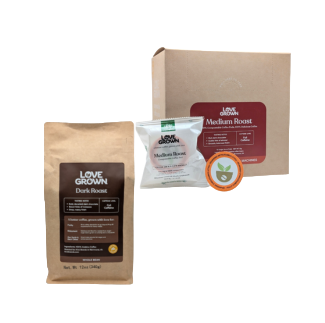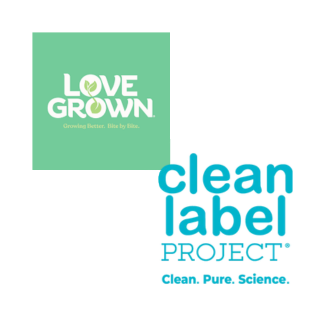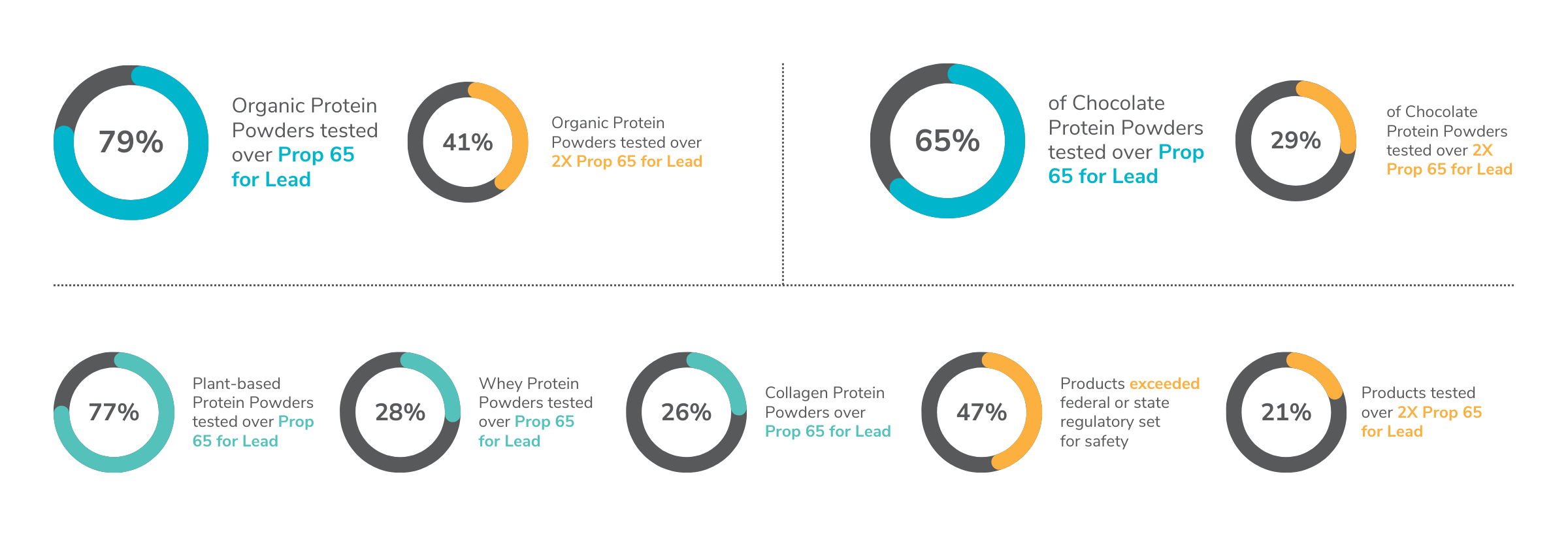

Coffee is one of the most popular beverages in the U.S., generating USD $269.27 billion in 2024. Over 1 billion people, worldwide, drink coffee every day – that’s about 12.6% of the world’s population.
At Clean Label Project, rather than accepting safety as a given, we rely on data and science to reveal the truth behind what consumers are really ingesting, focusing on ensuring transparency and safety in the market.
Grand View Market estimated the global market size of coffee at USD $269.27 billion in 2024 and is projected to reach USD $369.46 billion by 2030. While many assume that the coffee sector as a whole is safe, the Clean Label Project’s Coffee Category Report highlights important data regarding potential contaminants in coffee. This study, which tested 57 products from 45 of the top-selling brands, highlights concerns that challenge the current understanding of product purity.
The Clean Label Project conducted over 7,069 individual tests on contaminants, including heavy metals (lead, cadmium, arsenic & mercury), mycotoxins, pesticides, phthalates, glyphosate, and Aminomethylphosphonic acid (AMPA), a byproduct of glyphosate breakdown. These chemicals, known for their potential to harm human health, can contaminate coffee through environmental exposure, agricultural practices, processing, and packaging materials. The study’s findings highlight that many products may contain dangerous levels of contaminants not reflected on traditional nutrition labels, despite the growing health-conscious market.
Many varieties of consumer coffee products were tested to determine if roast (light, medium, dark), packaging type (bagged, canned, pods), and product claims (organic) were associated with particular levels of contaminants.
The United States federal government and all US States have no contaminant regulations for coffee. Usually, Clean Label Project uses California Prop 65 limits as a guideline for contaminant thresholds, but coffee is exempt from CA Prop 65. The Clean Label Project compared the coffee results to the EU Food and Beverage contaminant limits, listed below:
| Glyphosate (Round-up) | 100 ppb (green), No Limit Established (roasted) |
| AMPA (A Glyphosate Residue) | No Limit Established |
| Phthalates (Packaging Residue) | Migration limits:
|
| Acrylamide (Chemical from cooking) | No Limit Established |
| Arsenic (Heavy Metal) | No Limit Established |
| Cadmium (Heavy Metal) | No Limit Established |
| Mercury (Heavy Metal) | No Limit Established |
| Lead (Heavy Metal) | No Limit Established |
| Pesticides | 10 ppb – 200 ppb (varies) |
One surprising data point was how much glyphosate is used in the coffee growing and harvesting process. While the results found very little glyphosate in coffee, a significant amount of AMPA (Aminomethylphosphonic acid) was found. Essentially, when glyphosate breaks down in the environment, AMPA is one of the byproducts. AMPA is considered persistent in the environment and has been linked to various health and ecological concerns.
The most interesting finding was that 100% of the organic coffees tested had AMPA, and glyphosate is banned for organic products. Overall, caffeinated coffee is one of the cleanest categories the Clean Label Project has tested. While coffee is relatively clean, the results show certain packaging and roasts will provide the cleanest, guilt-free cup of coffee.
Clean Label Project purchased and rigorously tested 57 of the top-selling coffees, sourced from Nielsen, SPINS, and Amazon’s best-seller lists, and supplemented with top products from the natural and organic marketplace. It also assessed multiple panels of industrial and environmental contaminants. Collaborating with an analytical chemistry lab, Clean Label Project amassed 7,069 data points from 45 brands and 57 products to benchmark the findings.
Clean Label Project contracted the independent, ISO/IEC 17025-accredited analytical chemistry laboratory, Ellipse Analytics, to test six (6) industrial chemical panels, including heavy metals and bisphenols A and S.
The Clean Label Project found Glyphosate in two coffee samples. Glyphosate usually dissipates with heat, so the roasting process of coffee would cook off the glyphosate chemical residue. Glyphosate is a broad spectrum systemic herbicide and crop desiccant – it has been registered as a pesticide in the U.S. since 1974.
The Clean Label Project found Aminomethylphosphonic acid(AMPA) in 72%, or 41 out of 57, of the coffee samples tested, including 100% of the organic samples; this was surprising because glyphosate is banned for application on organic products. AMPA is a chemical compound that is a major breakdown product of the herbicide glyphosate and also a degradation product of other aminophosphonates used in water treatment.
Acrylamide was found in 100% of the coffee samples tested. When accounting for serving size, all samples fell within the EU limits, but a few cups of coffee would quickly push you over the limits for the day. Acrylamide is a colorless, odorless chemical compound that is formed when certain foods are cooked at high temperatures.
Dark or light roast coffee had the least amount of acrylamide. Also, canned coffee had significantly more acrylamide than bagged or coffee from pods.
Acrylamide Health Issues: Acrylamide forms in some foods during high temperature cooking. It has been linked to various health concerns, including nervous system effects, potential reproductive issues, and a possible link to cancer. While there’s no conclusive evidence of a direct link between acrylamide in food and human cancer, animal studies have shown that acrylamide can cause cancer in high doses.
How Acrylamide Contaminates Coffee: Acrylamide is a naturally formed chemical in coffee, is not directly added to food as a contaminant but rather forms during high-temperature cooking processes. This process, known as the Maillard reaction, involves reducing sugars and amino acids, like asparagine, reacting at high temperatures. The Maillard reaction is responsible for both the browning of food and the development of flavors.
How the coffee is roasted affects the presence of acrylamide. Many less expensive coffees, like those found in a can, are roasted at higher temperatures, increasing acrylamide in the beans.
The Clean Label Project found Phthalates in 40 of the 57 (17 without a detectable level), representing 70% of the coffee samples tested. The highest levels of phthalates were found in canned and coffee pods. Phthalates are a group of chemicals primarily used as plasticizers to make plastics more flexible and durable.
Phthalates Health Issues: Phthalates are a class of chemicals with endocrine-disrupting properties. These chemicals are associated with health harms including increased risk of cancer, asthma and allergies, and learning attention and behavioral difficulties in children.
How Phthalates Contaminate Food: Phthalates contaminate food and coffee primarily through packaging (bag, can, pods), processing equipment, and coffee preparation materials, which can leach into food and beverages. Additionally, phthalates can enter the food chain through contaminated water and soil.
Heavy metals were found in 100% of the coffee products tested, but all were under the EU limits, per serving. The results below are by region, please note that not all packaging indicated origin by country and/or region. African coffees have the least amount of heavy metals on average, and Hawaii has the most. Hawaii most likely has the highest levels of heavy metals due to the volcanic soils in which the coffee is grown.
Heavy metals (arsenic, lead, mercury, and cadmium) Health Issues: Heavy metals can cause a wide range of health problems, including damage to the nervous system, kidneys, liver, and other organs, as well as increased risk of cancer and other diseases. Exposure to heavy metals can lead to neurological issues like impaired cognitive function, memory loss, and brain damage. Additionally, heavy metals can impair the immune system, increase the risk of cardiovascular disease, and affect the reproductive system.
Environmental toxins in coffee are very low compared to other categories. This includes metals and pesticides. Two factors that likely contribute to the low presence of environmental toxins are:

One company leading in testing and transparency is Love Grown, which has worked closely with the Clean Label Project to minimize industrial contaminants of its products.
“At Love Grown, we’re committed to raising the bar on purity and safety so our customers can enjoy their daily brew without hesitation,” Love Grown President Katie Tyson noted. “We’re proud to be the only Clean Label Project Certified coffee brand, making our plastic-free coffee pods some of the safest options available. Together with CLP, we’re continuing to work toward reducing contaminants to as close to zero as possible.”

Surprisingly, there are no comprehensive federal regulations specifically targeting dietary exposure to heavy metals and industrial contaminants in food and beverages (like coffee), with most safety efforts focused on physical and microbiological contaminants. However, recent discussions in Congress and the FDA (with Closer-to Zero and action limits for baby food) are pushing for stricter standards on heavy metals and industrial chemicals in food products. States like California have led the charge with its Prop 65 (which is referenced many times in this coffee white paper). and California and Maryland transparency laws for heavy metals in baby food (CA AB899 & MD SB723). While (CA AB899 & MD SB723) initially focus on infant foods, they signal growing concern over contaminants in food across all categories.
Clean Label Project™ is a national non-profit with the mission to bring truth and transparency to food and consumer product labeling. The foundation of food and consumer product safety in America is primarily focused on pathogen and microbiological contaminants. However, there is an increase in consumer, media, and academic attention being paid to the health consequences of exposure to heavy metals, pesticide residues, and plasticizers. Yet, consumers will never find this information on product labels. We are committed to changing the definition of food and consumer safety through the use of data, science, and transparency. We award brands with products that place an emphasized focus on purity and surpass the minimum regulations required by FDA. At Clean Label Project, we encourage brands to join us in becoming part of the solution to address the growing consumer concern of industrial & environmental contaminants and toxins in both food and consumer products.
Food and consumer product safety regulatory fabric in America is largely focused on pathogen & microbiological contaminants. For categories where Clean Label Project does not have benchmarked data to warrant a Clean Label Project Purity Award, Clean Label Project borrows a page out the State of California Office of Environmental Health Hazard Assessment Safe Drinking Water and Toxic Enforcement Act of 1986. Informally known as Proposition 65, this regulation was enacted as a ballot initiative in November 1986. It considered the strictest regulation in the country when it comes to protecting consumers from industrial & environmental contaminants and chemicals of concern.
Proposition 65 aims to protect the state’s drinking water sources from being contaminated with chemicals known to cause cancer, birth defects or other reproductive harm, and requires businesses to inform Californians about exposures to such chemicals.
Clean Label Project purchased and rigorously tested 160 of the top-selling protein powders, sourced from Nielsen and Amazon’s best-seller lists, and supplemented with top products from the natural and organic marketplace. It also assessed multiple panels of industrial and environmental contaminants. Collaborating with an analytical chemistry lab, Clean Label Project amassed 35,862 data points from 70 brands and 160 products to benchmark the findings.
Protein powders tested by Clean Label Project had an array of positive results for levels of arsenic, cadmium, lead, and mercury. However, 47% of products exceeded at least one federal or state regulatory set for safety, including CA Prop 65, and 21% of the samples were over 2X CA Prop 65 levels.
– Heavy metals, such as arsenic, lead, mercury, and cadmium, are naturally occurring elements found in the Earth’s crust.
They enter the environment through natural processes like volcanic eruptions, weathering of rocks, and soil erosion. Over time, they accumulate in air, water, and soil, where they can make their way into plants, animals, and eventually into human food sources. Though naturally occurring, the concentration of these metals can increase due to human activities such as mining, industrial processes, and agricultural practices, leading to higher exposure risks in food products. Given the absence of federal regulations that require proactive testing to minimize the introduction into finished products, they can be unintentionally introduced into all foods and consumer products. Interestingly, certified organic products were found to have, on average, three times the lead compared to non-organic products. This was largely due to plant-based protein powders, which tend to contain higher levels of contaminants. Our studies continue to report chocolate as a high-risk ingredient.
– 65% of Chocolate Protein Powders tested over Prop 65 levels and 29% tested over 2X Prop 65.

Bisphenols, including BPA and BPS, are well-known endocrine disruptors with significant health risks. Research has shown that BPA can interfere with insulin tolerance, potentially undermining athletic training efforts for those using protein powders (Moon et al., 2015). Additionally, BPA is linked to metabolic issues, increasing the risk of type II diabetes (Le Magueresse-Battistoni et al., 2018). Fortunately, Clean Label Project’s 2023-2024 study found a significant improvement from 2018, with BPA and BPS detected in only 3 of 160 protein powder products, compared to 55% in previous tests. Plant-based protein powders were the most contaminated, containing five times more cadmium than their whey-based counterparts. Even the flavor of protein powder played a significant role in contamination levels. Chocolate protein powders, for instance, were found to have a staggering 110 times more cadmium [1] than vanilla-flavored varieties. Meanwhile, whey-based protein powders generally showed much lower contaminant levels, highlighting the variability in product safety depending on the protein source and flavoring.
Surprisingly, there are no comprehensive federal regulations specifically targeting dietary exposure to heavy metals in food, with most safety efforts focused on physical and microbiological contaminants. However, recent discussions in Congress and the FDA are pushing for stricter standards on heavy metals and industrial chemicals in food products. States like California have created regulations, like Prop 65 that we reference. Prop 65 requires businesses to provide warnings about significant exposures to chemicals that cause cancer, birth defects or other reproductive harm. CA and MD have led the charge with transparency laws for heavy metals in baby food (CA AB899 & MD SB723).
The two primary sources of contaminants in protein powders are the contaminated soils where ingredients are grown, and the packaging used for these products. At the agricultural level, companies can hold suppliers accountable to minimize pesticide and soil contamination during the growth cycle of their ingredients. However, the good news is that packaging has seen significant improvements in terms of BPA content. Clean Label Project’s testing indicates that BPA has been nearly eliminated from packaging, reflecting the industry’s response to consumer demand and controversy surrounding this chemical.
Clean Label Project contracted an independent analytical chemistry laboratory, Ellipse Analytics, to test 6 industrial chemical panels, including heavy metals and BPA.The heavy metals, arsenic, cadmium, lead, and mercury, were tested by Inductively Coupled Plasma–Mass Spectroscopy (ICP-MS). Bisphenols and pesticides are tested by liquid Chromatography–Tandem Mass Spectroscopy (LC-MS/MS).
Our mission is to empower consumers to see beyond flashy marketing. When it comes to selecting low-contaminant options, our findings reveal that plant-based protein powders generally had the highest levels of detected contaminants, while whey-based protein powders consistently demonstrated lower levels. The data from this protein study, enables consumers to make informed choices that prioritize safety and quality in their dietary supplements. Based on our study, the products with the least lead are whey or collagen-based protein powders that are not chocolate-flavored.
The following companies have protein powders that are Clean Label Project Certified:
Stay tuned as more brands are currently going through the Certification Process.
“The food industry owes their customers an open, honest, and transparent view of how clean their ingredients are,” explains Jaclyn Bowen from Clean Label Project. “Consumers are purchasing supplement and protein products for health and performance, they expect the products to be clean.”
Transparency laws like CA AB899 and Maryland “Rudy Law” is the future for consumer trust and industry change. Clean Label Project has a Transparency certification that displays the results of all certified brands lots providing consumers with the confidence to make the right informed decisions. We believe there is a growing concern about food and supplement safety and a growing demand for transparency.
Currently only one protein company, Puori, is certified to Clean Label Project Transparency Certification but we encourage more brands to seek Transparency Certification providing consumers with the trust they deserve.
Join our community of informed consumers and advocates. Follow us on social media to stay engaged, share your thoughts, and be part of the movement toward greater transparency in product labeling.
Clean Label Project™ © 2025. All rights reserved.